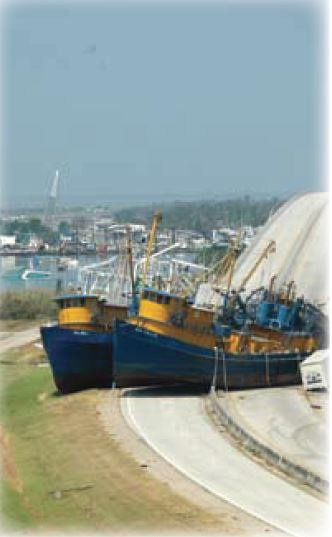
Motor vessels Sea Wolf and Sea Falcon were washed onto the road in Empire, LA, after Hurricane Katrina ripped through the area. Photo courtesy of the U.S. Coast Guard
It is abundantly obvious that the potential for another hurricane strike is not figuring into growth patterns in Galveston County. After the near-miss of Hurricane Rita and the devastating effects of Hurricane Ike, most people are fully aware of the possibility of another hurricane strike on the Texas Gulf Coast. Yet building continues apace in low-lying areas of Galveston, Harris and adjoining counties.
Addressing the serious issues of coastal growth, with ever increasing populations in coastal hazard zones, automatically addresses issues of climate change and exacerbating coastal hazards. The same set of policy tools will be used. It is really just a question of adding an extra buffer or “freeboard” to the limits we are already facing.
Preparing in advance for disasters, whether acute like Katrina, Ike and Sandy or chronic like sea level rise, is what mitigation for natural disasters is all about. While necessary to protect “inevitable development,” structural mitigation, such as a levee or a seawall, has the deleterious side effect of making hazardous areas seem safer than they are. Non-structural mitigation, which involves first and foremost planning, is the preferred alternative of almost every knowledgeable hazard management specialist (Burby, 1998, 2006; Godschalk, 1998, 2003; Larsen et al., 2003; Berke 2006; U.S. Ocean Commission, 2004).
An abundance of evidence shows that planning does indeed make a difference (e.g., Brody, 2008, and Burby, 2006). The key is figuring out what mix of requirements and incentives are best, and what level of government is best suited to carry out on-the-ground plans. The policy mix that best addresses current coastal hazard management will also best address impacts associated with global climate change.



